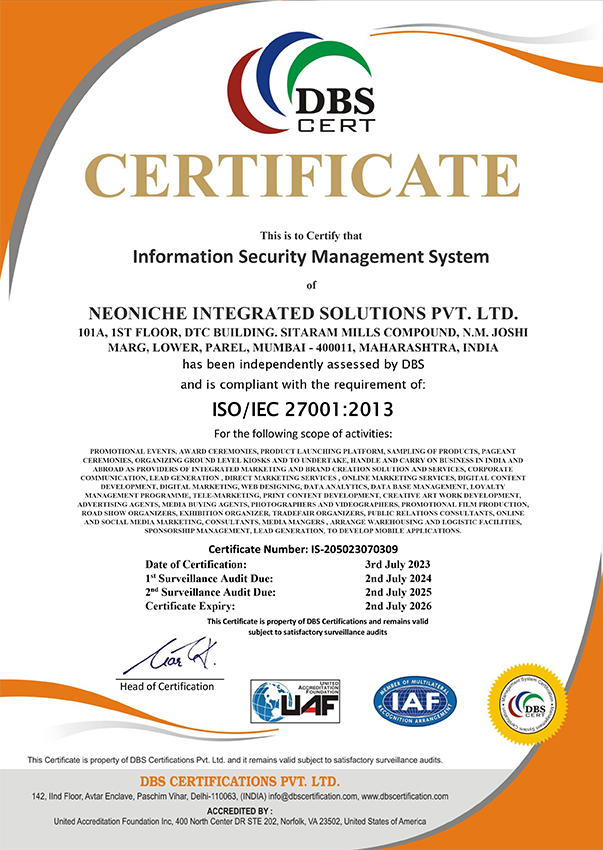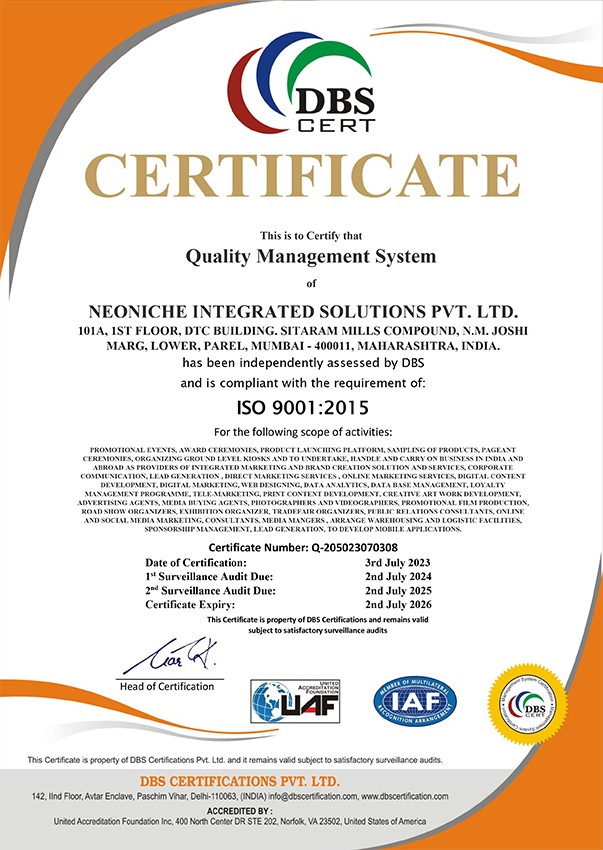Branded events can be admired for the glitz and glamour, the stunning visuals, impressive designs and engaging activities. However, often times we find the reason and meaning behind these interactions are hard to define. Creating an immersive experience is exciting but if it represents your brand poorly, the impact is greatly diminished.
Integrated marketing focuses on delivering a core message to a specific target group at multiple touch points. Customer may be busy with their personal or work life, and that’s why brands need to discover non-intrusive ways of reaching out and engaging with their target demographic. Building visibility while simultaneously communicating your company’s values, beliefs and offerings can create a positive brand experience for most customers.
An Integrated marketing plan will communicate your offerings to customers at comfortable touch points they are familiar with, usually their email inbox, social media, via websites and physical invites, etc. A key factor in curating an Integrated marketing campaign is the need for a strong core message to be communicated to all attendees. Finding a central theme can reinforce the message and deliver a unique experience, but be careful, it can also act as a double-edged sword.
Poorly thought through activities will leave your attendees flustered and confused about the purpose and rationale. Sub-par communication is a big hurdle in this regard. When conceptualizing an Integrated marketing plan, the core message (or core messages) needs to be identified well in advance.
Integrated marketing also relies on consistent visual tonalities for customers to understand the relevance of each aspect to one another. A strong 360° communication plan can be recognised instantly through the use of brand colours and unique design elements of the brand itself.
At events, every aspect from the registration desk to the giveaway must represent the brand’s identity and core message. Event management agencies and experiential marketing companies curate the experience while keeping in mind the industry and brand involved before conceptualizing individual points of engagement.
Nike’s Bleed Blue campaign back in 2011 is still an outstanding example of a successful Integrated marketing campaign that focused on the Team India jersey and married the digital and physical platforms during the ICC World Cup. Prior to the campaign, Nike featured a series of Indian cricketers in their avatars of strength, performance and passion which also represented Nike’s brand identity.
The campaign integrated social media like Facebook and Twitter before organizing an outdoor campaign that focused on PR. Television advertisements also featured the celebrities and fans living the ‘Bleed Blue’ attitude. The campaign was further emphasised when India managed to go on an incredible winning streak before clinching the trophy.
In recent times, Flipkart adopted the Integrated marketing approach for their ‘Big Billion Days’ shopping festival. In the days leading up to the sale, the online portal sent push notifications to alert users about upcoming deals along with television commercials to amplify reach and intrigue. On the first day of the sale, Flipkart used email and SMS reminders, full-length advertisements on the front of local and national newspapers and radio ads to entice users to shop on the platform. In addition, throughout the duration of the sale, Flipkart invested heavily on sponsored social media to generate leads through platforms like Facebook, Instagram and Twitter which made this campaign largely successful by reaching the urban masses.
On the whole, Integrated marketing can help brands communicate their values, mission and offerings to the vast gamut of their audience in a seamless manner which they can experience as a part of their daily lives. If executed precisely, it can connect to customers via a unique core message and create strong brand ambassadors who truly believe in the vision, values and promises of the company.


